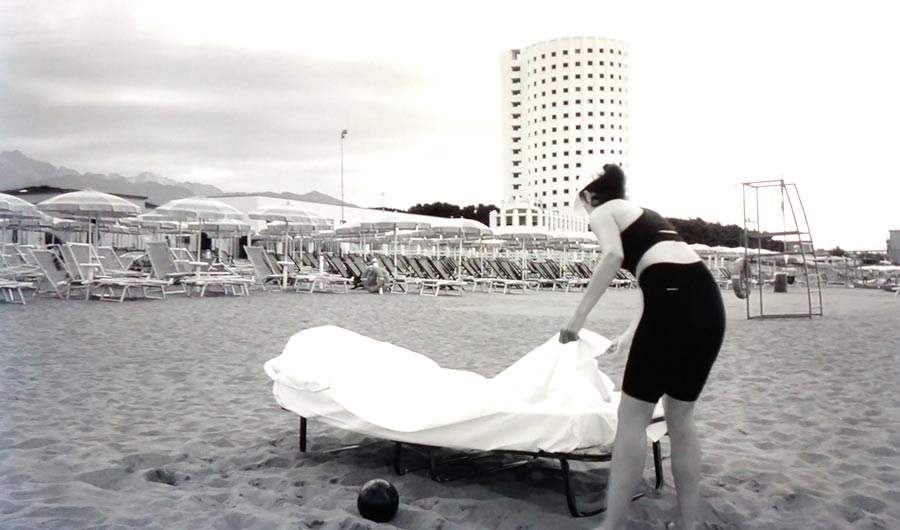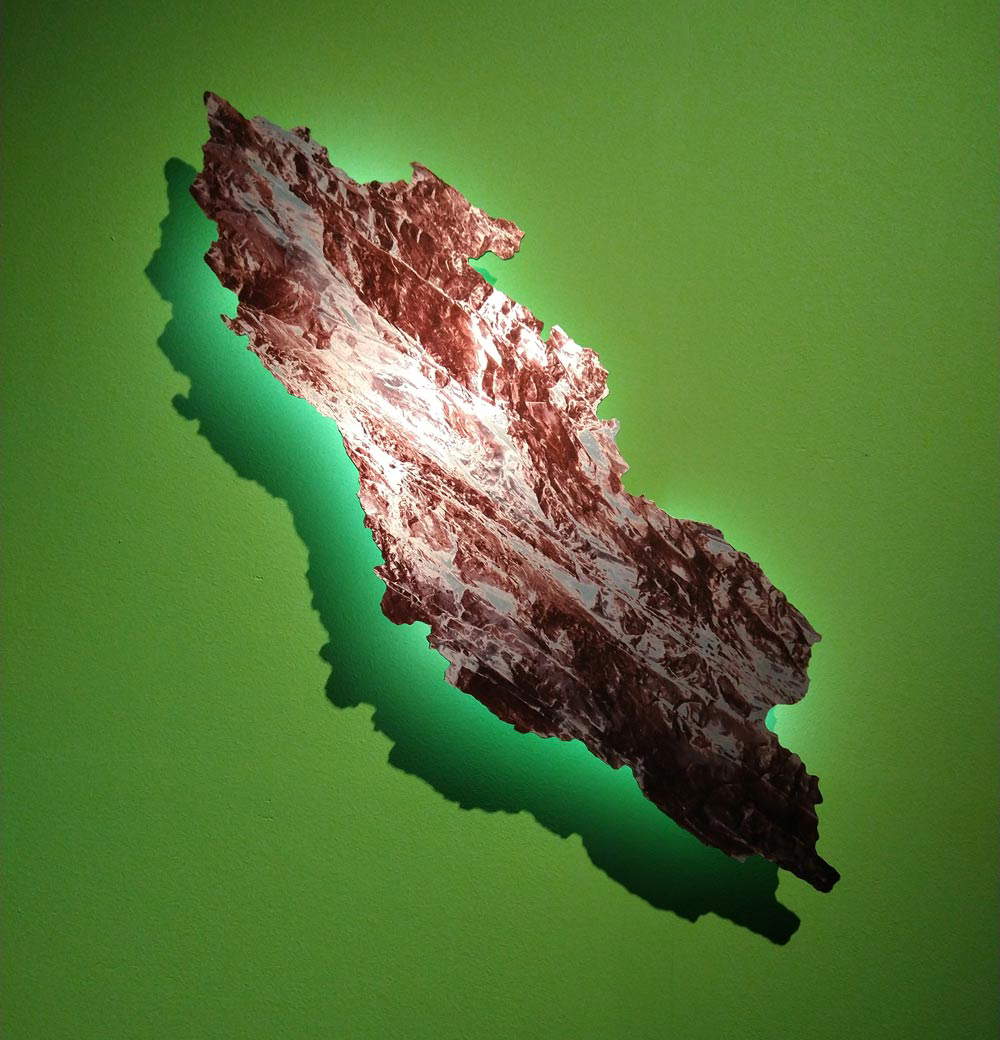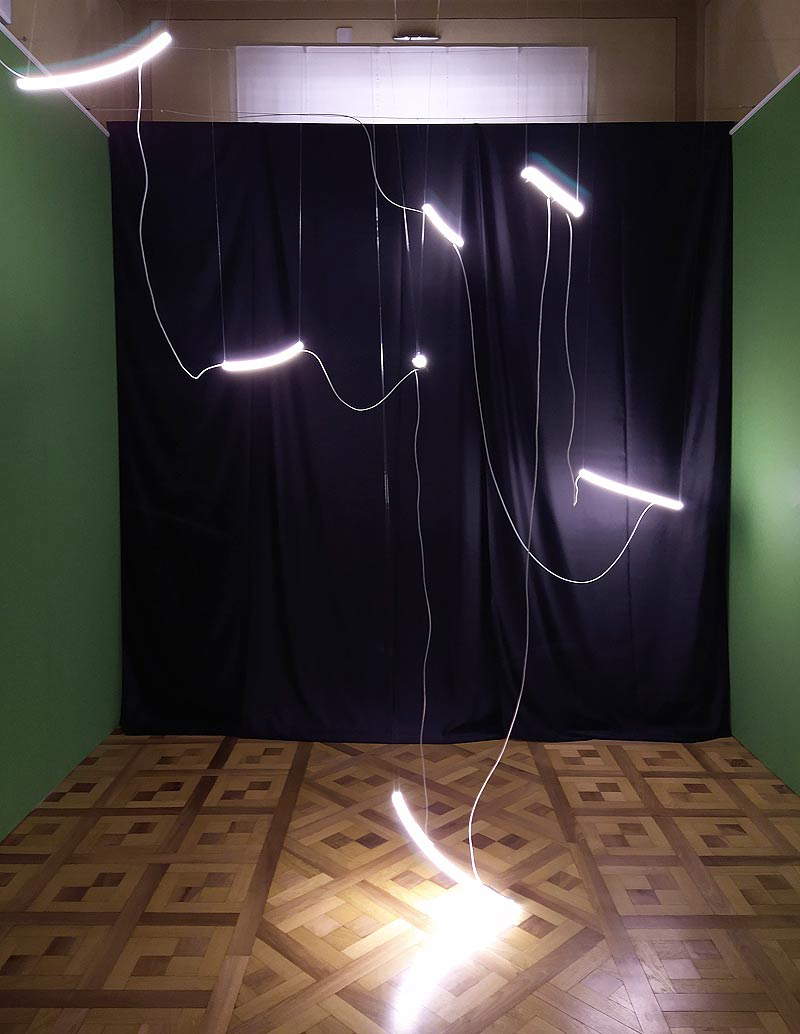Until Oct. 16, 2022, the Fondazione Cassa di Risparmio di Carrara is hosting the exhibition T.O.T. - Themes of Traces, a group show of contemporary art curated by Andrea Zanetti and promoted by the Fondazione Cassa di Risparmio di Carrara at its headquarters in Palazzo Binelli. Through different languages, five contemporary artists (Emiliano Bagnato, Raffaele Morabito, Federica Mutti, Eleonora Roaro and Vincenzo Zancana) reflect on the theme of the trace, of which they highlight their personal interpretation in order to share it with the suggestions of the public: trace of memory, of sound, of light, of word, of mutation. The exhibition project stems from the idea of declining the theme of the 2022 edition of the Festival con-vivere in a contemporary vision that, from the free and intimate reflection of the artists, opens up to discussion with visitors to foster that necessary exchange between individual sensibility and collective reflection.
The exhibition represents the first appointment of a cycle of exhibitions realized by the Fondazione Cassa di Risparmio di Carrara that includes the works of artists under 35 in its collection, a project that aims at the valorization of younger artists in order to offer their contemporary artistic vision to the public heritage. This first exhibition project touches the chords of memory in a temporal leap that embraces black pages of our History, still present as traces in the landscape, but that recalls them with lucid detachment, in a contemporary farce that verges on tragedy. Then there are sound traces that materialize in the encounter between work and visitor to deliver to the public the responsibility of its gesture but also the uniqueness of our being, with the natural force of individual differences that go to create the visual and perceptual whole of the work itself. And again, traces of light, in the plastic exaltation of imperfection as an unveiled symbol of the true essence of things; imperfection that is understood in its being outside the context that defines it, to become a form in its own right and the perfect object of visual imperfection. Then there are the words, obvious traces of signs and imprints, floating in the sea of meanings to appropriate each individual interpretation and challenge us to individual, subjective understanding, intangible traces of thoughts, memories and experiences.
The path is outlined through five art installations that dialogue with the space to define its new dimension. It begins with Eleonora Roaro’s Estate 1936 project, which investigates the legacy of childhood seaside colonies during Fascism starting with the case of the former Balilla Tower in Marina di Massa. Designed by architect Vittorio Bonadé Bottino at the behest of Edoardo Agnelli for FIAT employees and opened in 1933, the 52-meter tower was capable of accommodating up to 800 children. An Istituto Luce film from 1936, edited for the occasion by Eleonora Roaro, shows the rigid routine and “unusual discipline”(Casabella No. 167, 1941, p. 2) that connoted the days at the summer camps, which were a veritable consensus-building tool: the little time devoted to play disappeared to make way for organized activities in which order, rhythm and collective movement had predominant weight. In a performance created by the artist, a number of actions inspired by the regulations of the colonies are repeated, the alienation and desire for indoctrination of which is highlighted. Black-and-white postcards, a fascist-era poster and a floor plan place emphasis on the iconography of the Balilla Tower by emphasizing the rigor of modernist architecture, a rigor that is reflected in the actions of those who lived in those places whose memory has often been erased.
The second installation is Semblant by Vincenzo Zancana, a work that symbolizes a path, a route physically taken by the artist in search of the path of Aronte among the Apuan Alps, an installation designed especially for the Fondazione Cassa di Risparmio di Carrara. The work is formalized from a dual point of view: between the story of the haruspex Aronte, an undisputed defender of the mountains who died for love, and the tangible intervention of man as a rooted inhabitant. The installation consists of photographs printed on aluminum, taken and post-produced by the artist, and a black fabric backdrop that covers the surrounding space, creating two different levels of perception. Specifically, the images, through chromatic subtraction, undergo digital manipulation, transforming the photographic elements into new archipelagos, into fragments and paths of a new setting where the legend of Aronte has not yet been revealed.
Third stop on the itinerary is Da lontano viene la luce by Raffaele Morabito, a site-specific light installation designed specifically for the spaces of the Fondazione Cassa di Risparmio di Carrara. The project, which is part of a larger series, consists of a sequence of neon lights modeled on the pattern of scratches taken from restoration photographs made by the artist’s father. The source images document the interventions made and were taken in his father’s workshop before it was closed due to the crisis in the craft sector in the early 2000s. For Morabito, a child, the closure of the workshop was a traumatic event, not only because of the socio-economic change that affected his family but because it meant no longer having access to the place of creation. In the wake of the contemporary conception of restoration, the artist brings out the physical traumas that photographic emulsions carry as a metaphor for crisis, returning them to their initial condition: beams of light.
May Contain Traces of Fear , on the other hand, is Federica Mutti’s project: in the food industry, the wording “may contain traces of” indicates the possibility of possible unintentional contamination of food with allergens not present among the ingredients, but processed in the production lines themselves. The installation consists of several elements, all of which feature the transfer of everyday elements into the artistic sphere. The goal is to produce three works that, as the title emphasizes, might contain traces of fear. From candy wrappers to the herbs he compulsively eats to cope with Sartrian anxieties, nervousness and nausea, the artist picks herbs and flowers that he organizes into an orderly herbarium, totems of fear at once shunned and cultivated, made an object of worship. A collection of sugar teeth averts the risk of tooth decay, and letters of sugary colorations compose expressions painted with revealing pigments of dental plaque.
The path closes with Soundscapes - Environment #1 by Emiliano Bagnato. In the environment are an aluminum plate placed on a cube and a canvas, two surfaces with which to freely interact using the objects near them. The vibration of the surfaces, caused by the visitors’ acts, is picked up by contact microphones; their signal is electronically processed to extract timbres and musical fragments from the noise, while on the screen, the sound generated by the interaction becomes an image, organized in frequency, intensity and time. It is the visitors’ actions that complete the work; without them, the space is silent and the screen is black: only, visible, traces of the passage remain.
The exhibition is open Thursday through Sunday from 5 to 9 p.m. For openings at other times write to segreteria@fondazionecrcarrara.com.





 |
| Carrara, at the Fondazione Cassa di Risparmio the T.O.T. exhibition, on the theme of traces |
Warning: the translation into English of the original Italian article was created using automatic tools. We undertake to review all articles, but we do not guarantee the total absence of inaccuracies in the translation due to the program. You can find the original by clicking on the ITA button. If you find any mistake,please contact us.